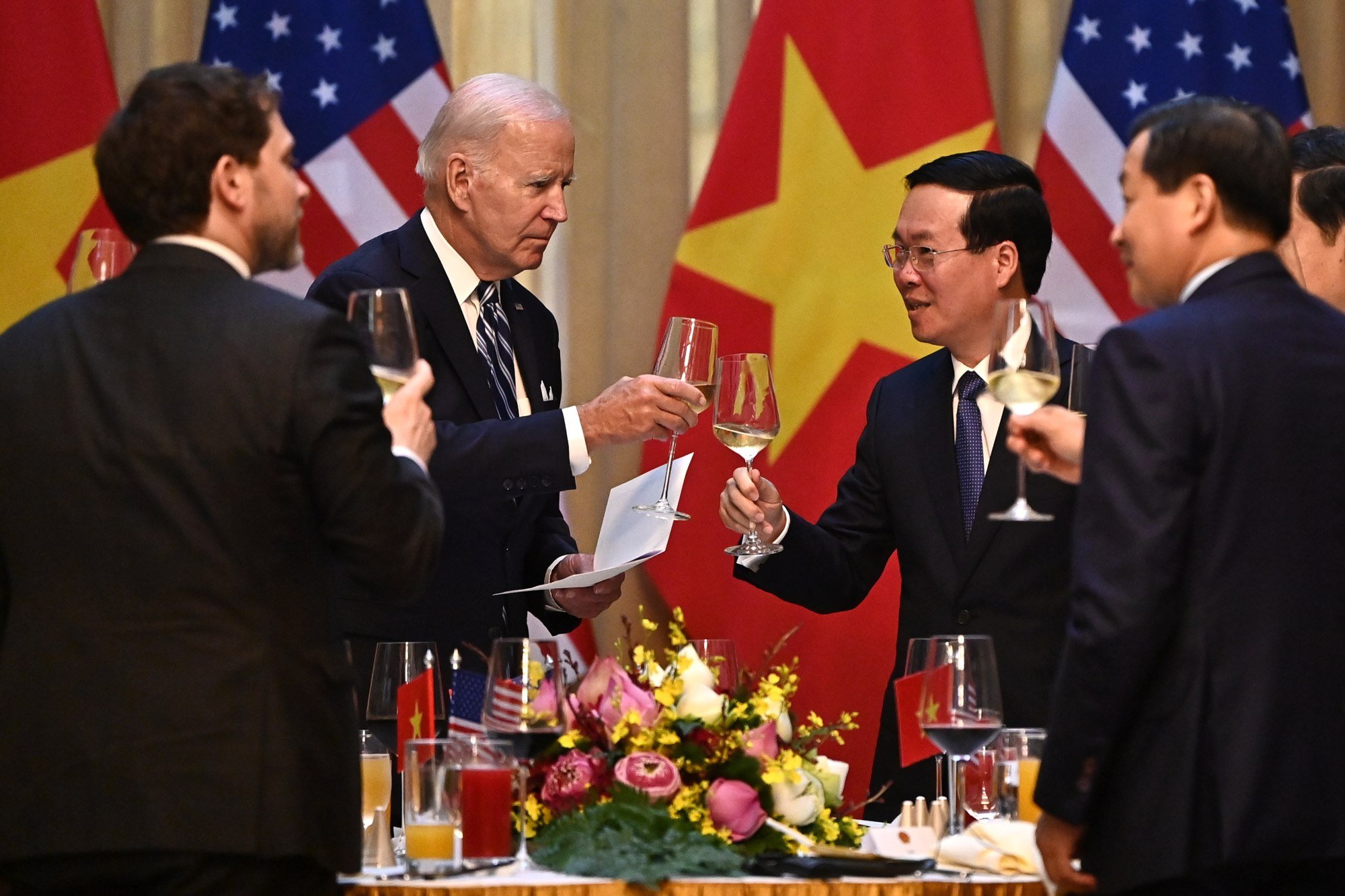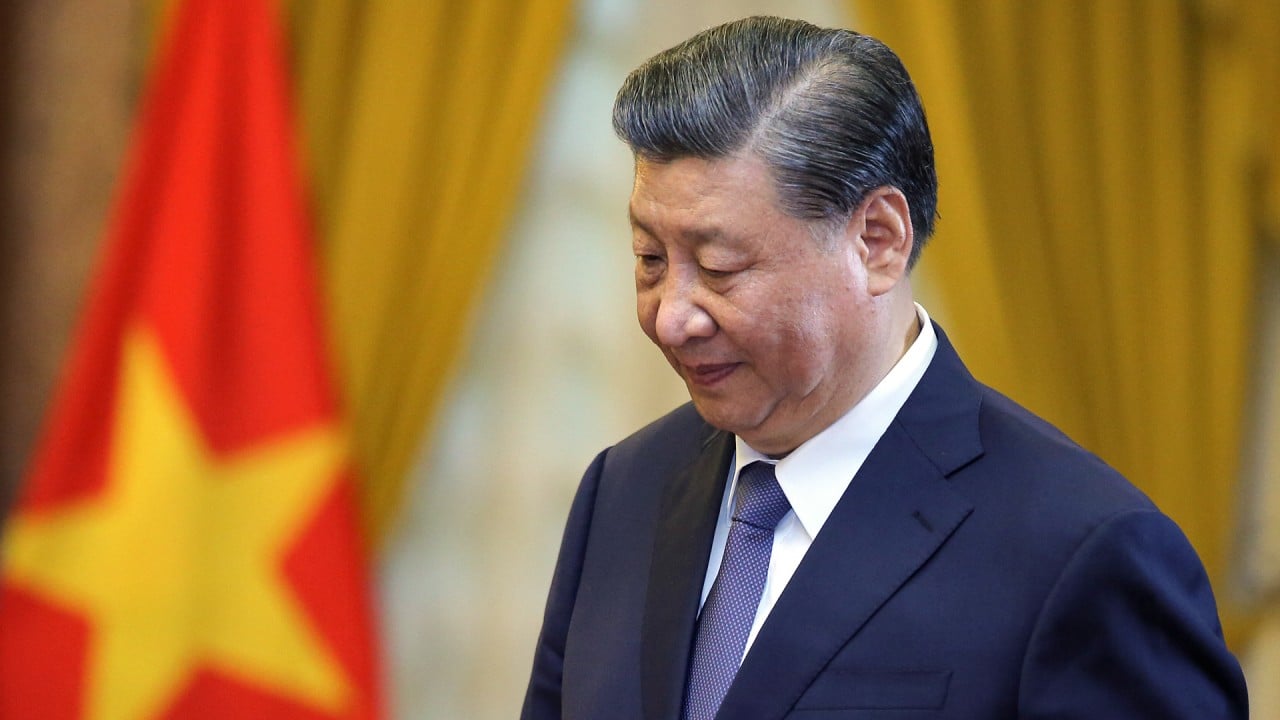
Vietnam’s partnership with China is ‘window dressing’ as it aims for flexibility in international relations
- Vietnam wants to diversify its foreign policy options as it already has signed partnerships with five other countries, analysts say
- As part of its flexible approach, Vietnam might also elevate its partnerships with some Asean members in future
According to Thayer, Vietnam’s alliance with its powerful neighbour and the statement’s commitment to building a “community with a shared future that carries strategic significance” could be seen as “making a virtue out of necessity”.
“Vietnam must maintain manageable good relations with China because of their geographical proximity and economic interdependence,” he said.
Vietnam warms towards Belt and Road Initiative as Laos, Cambodia reap benefits
The joint statement says the two countries agreed to increase cooperation in several areas, including security, economic issues, the construction of cross-border rail connectivity and joint patrols between their defence ministries in the Gulf of Tonkin.
Despite ongoing skirmishes between the two countries in the South China Sea, their economies are interdependent with much of Vietnam’s exported goods built using Chinese-made parts.
Nguyen Khac Giang, a visiting fellow at the ISEAS-Yusof Ishak Institute in Singapore, said that adding the “community with a shared future” concept in the statement does not necessarily elevate China above Vietnam’s other partners.
“China’s advantage lies in its close party-to-party relationship with Vietnam, a by-product of their ideological alignment. However, this dynamic hasn’t changed significantly with Xi Jinping’s recent visit,” Giang said.
The two countries’ communist parties share a common history of fighting Western imperialism and foreign invaders. From 1946 to 1954, former Chinese leader Mao Zedong extended ideological, political and material support to Vietnam in the latter’s struggle for independence from the French. Chinese troops were also involved in Vietnam’s war against the US over several years in the 1960s.
Noting that Vietnam was one of the last Southeast Asian countries to partner with China in the “community with a shared future” concept, Giang said that Hanoi’s initial hesitation likely stemmed from its desire not to appear aligned with either China or the US.
Hence, embracing the concept might be a concession made by Hanoi in response to its recent diplomatic upgrades with the US and Japan to comprehensive strategic partnerships.
Derek Grossman, a senior defence analyst at the Rand Corporation, noted that, over the past year, Vietnam has forged three comprehensive strategic partnerships – with Japan, South Korea and the US. This showed that Hanoi has “devalued” the distinction, Grossman said.
Xi’s Vietnam visit set to focus on rail link, rare earths amid rising US clout
But Thayer said Vietnam has not downgraded such partnerships. Rather, Hanoi has removed “long-standing rigidities” in its 2003 policy of “cooperation and struggle” that privileged China, Russia and India over the US, Japan, Australia and South Korea, he added.
Describing the comprehensive strategic partnerships as the “apex” of Vietnam’s bilateral diplomatic relationships, Giang said the framework gives the country greater flexibility to collaborate in any area and at any level with its partners.
“However, the practical extent of this cooperation is contingent upon Vietnam’s priorities and capabilities, as well as prevailing international conditions,” he said.
Citing India as an example, Giang said Vietnam’s relationship with the South Asian country under the comprehensive strategic partnership is not on the same level as that with China or the US.

Bich Tran, a postdoctoral fellow in the Lee Kuan Yew School of Public Policy at the National University of Singapore said it is difficult to compare the comprehensive strategic partnerships among different countries as they emphasise different aspects such as trade, investment, or maritime security.
Vietnam has been flexible in calibrating its partnerships in different areas such as arms supply and security.
One of the world’s 20 biggest buyers of weapons, Vietnam has an annual budget for arms imports estimated at US$1 billion that is set to grow, according to GlobalData, a provider of military procurement intelligence. Most of that money has historically gone to Russia but in recent years, Hanoi has also turned to suppliers from India and the US.
When the US and Vietnam upgraded their ties in September amid long-standing tensions over conflicting claims in the South China Sea between China and Vietnam, Washington and Hanoi pledged to further cooperation in maritime law enforcement and maritime security.
In due course, Vietnam might also look to elevate its partnerships with some Asean members to the level of comprehensive strategic partnerships, Bich said.
“Doing so, however, requires more resources to carry out a higher level of cooperation. Hanoi will need to balance between its goal and capacity,” she added.


